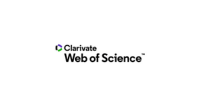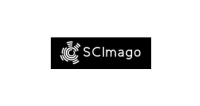HEMATOLOGICAL STANDARDS, HORMONAL INDEXES AND GONADAL MORPHOLOGY OF ROADSIDE HAWKS (RUPORNIS MAGNIROSTRIS)
DOI:
https://doi.org/10.5380/avs.v23i1.58580Palavras-chave:
endocrinology, histology, blood parameters, raptorsResumo
Efforts to conserve birds of prey have been increasing over the past three decades, highlighting breeding programs in captivity and zoos, scientific research, environmental education, rehabilitation and reintroduction. In order to generate subsidies for such actions, blood samples and gonads were collected from 24 roadside hawks to determine the hematological and hormonal indexes and gonadal morphology. Routine techniques for hematological, histological and chemiluminescence analyses were used to determine hematology, gonadal morphology and hormone levels, respectively. Hematological values of PCV, erythrocytes and lymphocytes differed between the birds recently-arrived in captivity and the birds with at least one year of captivity, a difference associated to the higher level of stress of the newly arrived animals due to the recent exposure to captivity conditions. T3 was significantly different between females and males, and T3 and T4 were higher in animals during feather moulting. The gonadal morphology was similar to that of other birds, however, persistence of the right ovary was observed in 66% of the cases, and other characteristics indicative of a seasonal reproductive cycle in the Brazilian Northeast. The data collected serve as subsidies for the clinical care of this species, besides providing a better understanding of the reproduction of birds of prey, and assisting in the preservation.
Downloads
Publicado
Como Citar
Edição
Seção
Licença
Autores que publicam nesta revista concordam com os seguintes termos:
- Autores mantém os direitos autorais e concedem à revista o direito de primeira publicação, com o trabalho simultaneamente licenciado sob a Creative Commons - Atribuição 4.0 Internacional que permite o compartilhamento do trabalho com reconhecimento da autoria e publicação inicial nesta revista.
- Autores têm autorização para assumir contratos adicionais separadamente, para distribuição não-exclusiva da versão do trabalho publicada nesta revista (ex.: publicar em repositório institucional ou como capítulo de livro), com reconhecimento de autoria e publicação inicial nesta revista.
- Autores têm permissão e são estimulados a publicar e distribuir seu trabalho online (ex.: em repositórios institucionais ou na sua página pessoal) a qualquer ponto antes ou durante o processo editorial, já que isso pode gerar alterações produtivas, bem como aumentar o impacto e a citação do trabalho publicado.















